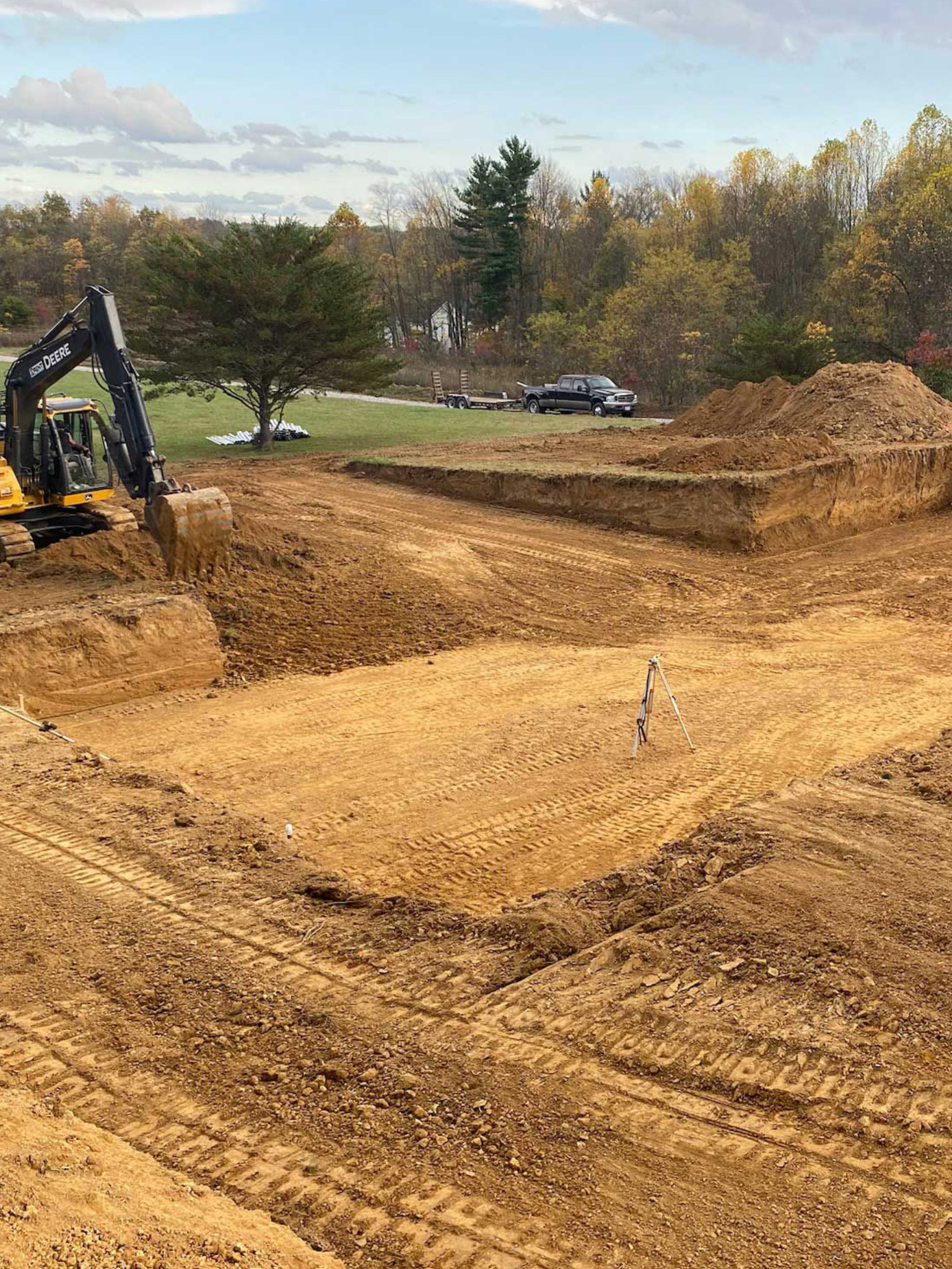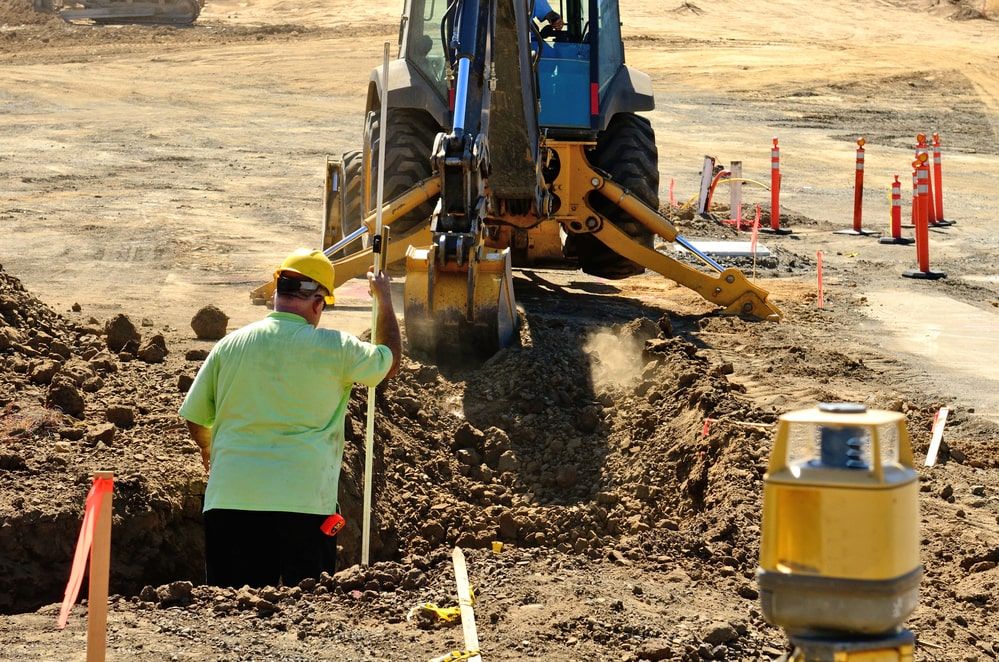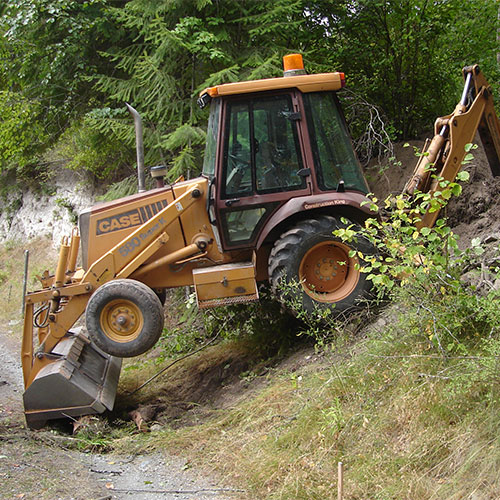Lancaster Trenching - Professional Trenching Solutions in Lancaster, Ohio
Lancaster Trenching - Professional Trenching Solutions in Lancaster, Ohio
Blog Article
Extensive Exploration: The Scientific Research Behind Superior Excavation Practices
The world of excavation practices is a domain where science intertwines with workmanship to uncover the enigmas hidden under the earth's surface area. From ancient hand tools to modern-day hydraulic excavators, the development of excavation strategies has been a testimony to human ingenuity and technological improvements. What genuinely establishes superior excavation practices apart is a deep understanding of geological concepts, coupled with the usage of innovative tools and methods. By discovering the scientific research behind these practices, we can uncover the secrets that exist below our feet and appreciate the precision and proficiency that enter into every dig.
Evolution of Excavation Methods
Throughout background, the development of excavation methods has actually played a critical duty ahead of time building methods and historical explorations. From the basic devices used by our ancestors to the sophisticated equipment employed in contemporary times, the development of excavation methods has actually significantly changed how we come close to numerous projects.
In ancient times, manual work with basic devices such as pickaxes, wheelbarrows, and shovels was the primary technique of excavation. This labor-intensive process restricted the depth and scope of excavations, often leading to sluggish development and limited accessibility to certain sites. However, as human beings advanced, so did the tools and techniques used for excavation.
The Industrial Revolution marked a transforming factor in excavation practices with the introduction of steam-powered equipment. In contemporary times, technology plays an essential role in excavation, with improvements like GPS systems, drones, and 3D scanning enhancing precision and efficiency in the field.
Role of Technology in Excavation

The integration of advanced technology has fundamentally revolutionized the field of excavation, improving precision and efficiency to unmatched levels - lancaster trenching. One of the vital technical developments that has dramatically affected excavation practices is the usage of General practitioner systems.
Moreover, the arrival of 3D modeling and simulation software has streamlined the planning process for excavation projects. Engineers and operators can currently envision the whole excavation process prior to breaking ground, identifying prospective challenges and enhancing process. In conjunction with this, the implementation of drones in excavation activities has actually facilitated airborne surveys, volumetric measurements, and website inspections with unparalleled speed and accuracy.
Geological Principles in Excavation
An understanding of geological concepts is vital for guaranteeing the architectural integrity and security of excavation websites. Geological elements play a vital duty in identifying the feasibility and safety of excavation jobs (septic ohio). One key geological concept to think about is the sort of soil or rock existing at the site. Different dirt kinds, such as clay, gravel, or sand, have varying levels of stability and call for different excavation strategies. Cohesive soils like clay might need additional assistance to avoid collapses, while sandy soils might be vulnerable to erosion throughout excavation.
Moreover, the geological framework of the area, including faults, fractures, and rock formations, must be meticulously analyzed to determine potential dangers and obstacles. Digging deep into near mistake lines or unsteady rock formations can bring about instability and potential risks. By performing comprehensive geological surveys and evaluation, excavators and designers can create techniques to minimize threats and make certain the effective conclusion of excavation projects. Ultimately, including geological principles right into excavation techniques is critical for attaining secure, efficient, and sustainable outcomes.

Latest Devices for Excavation
In the world of excavation practices, modern developments in tools have actually revolutionized the effectiveness and accuracy of excavation procedures. These drones can give detailed aerial surveys of excavation websites, providing real-time information on topography and prospective dangers.
One Visit Website more cutting-edge device getting popularity is the application of 3D printing modern technology for producing personalized excavation equipment. This allows for the manufacturing of specialized tools that are customized to the specific requirements of a task, increasing efficiency and decreasing downtime.
Moreover, innovations in materials scientific research have actually resulted in the advancement of stronger and more long lasting excavation tools. dump truck companies in ohio. Tungsten carbide-tipped excavator accessories, as an example, offer exceptional efficiency in difficult ground conditions, improving performance on-site
Science's Impact on Excavation Practices

Furthermore, innovations in products scientific research have actually led to the production of stronger, much more long lasting excavation devices and devices. The use of composite products in miners and shovels has actually boosted their efficiency and long life, eventually increasing efficiency on excavation sites. Additionally, clinical research on dirt mechanics and geotechnical design has provided beneficial understandings into soil habits, permitting excavation specialists to make enlightened choices regarding excavation techniques and dirt stablizing methods. Generally, science continues to drive innovation and renovation in excavation techniques, making excavation jobs a click to investigate lot more effective, cost-effective, and sustainable.

Final Thought
Finally, the advancement of excavation methods has actually been considerably influenced by improvements in technology and a much deeper understanding of geological concepts. The most up to date tools and tools utilized in excavation have enhanced performance and accuracy in the field. The application of clinical understanding has actually dramatically boosted excavation methods, leading to much more reliable and lasting approaches for digging deep into different kinds of products.
In the realm of excavation methods, contemporary advancements in devices have reinvented the efficiency and precision of excavation procedures. By leveraging clinical principles, the excavation industry has been able to substantially boost effectiveness, accuracy, and security in excavation procedures. GPR enables excavation groups to non-invasively scan and map subsurface structures, utilities, and prospective hazards, enabling them to intend excavation jobs with better accuracy and reduced risk of accidents.
In addition, clinical study on soil mechanics and geotechnical engineering has actually offered valuable insights right into soil behavior, enabling excavation professionals to make educated choices concerning excavation techniques and soil stabilization strategies. On the whole, science my review here proceeds to drive technology and improvement in excavation methods, making excavation jobs extra effective, cost-efficient, and sustainable.
Report this page